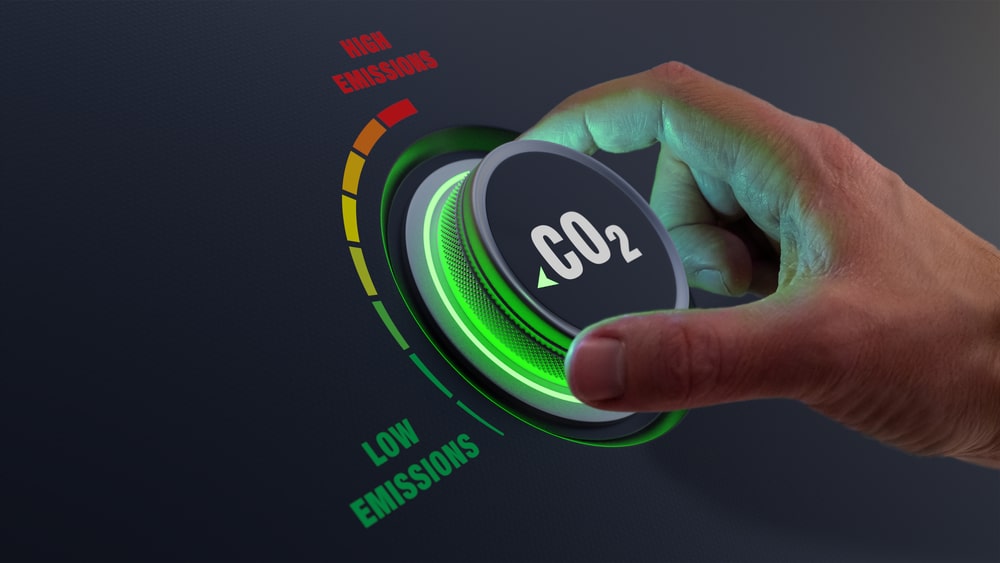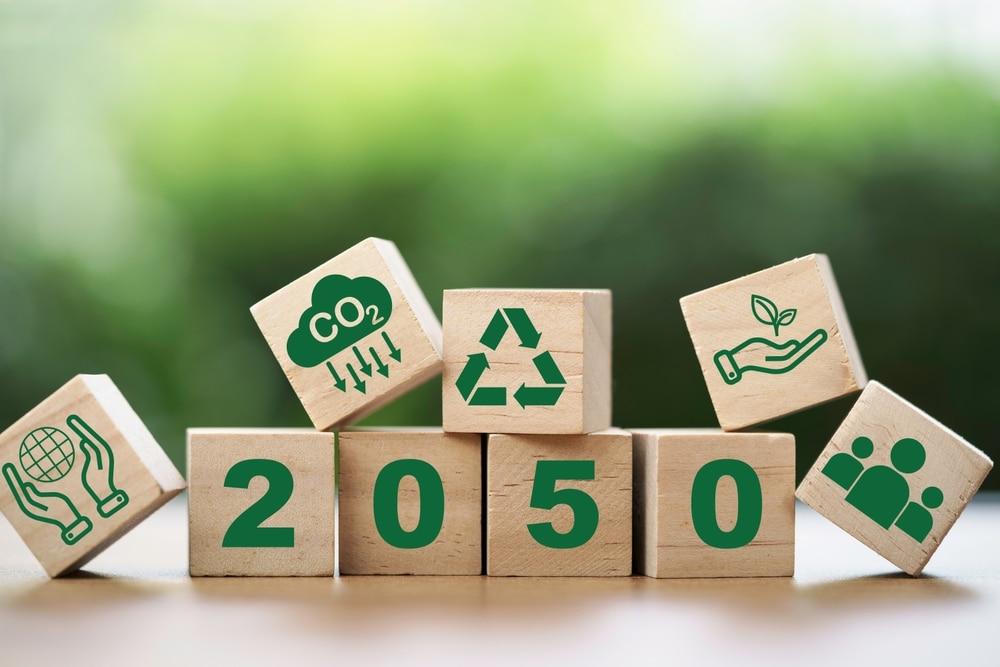Carbon emission regulations are sets of regulations onto which newly built ships have to convene since 15 July 2011. The International Maritime Organization (IMO) has been striking for ten years now about reducing greenhouse gas emissions by the maritime transportation business. These regulations altogether with the International Convention for the Prevention of Pollution from Ships (MARPOL) demonstrate the industry’s strong will to protect the environment.
Why lower emissions from the sea transportation sector?
Approximately 3% of the annual global greenhouse gas emissions (GHG) emissions are sourced from the shipping industry while they transfer various commodities from port to port. Due to the increase in the exchanges in between producers and consumers around the world, the carbon dioxide emissions from the global fleet are also growing despite the Paris Agreement’s temperature objective of restraining global warming toward 1.5 degrees Celsius.
To fight against this alarming trend, the sea transportation industry actors have agreed to decrease their carbon footprint by at least 50% of their 2008 figures by 2050. Therefore, as a global regulator, the International Maritime Organization conducts continuous discussions about measures to contain the business’s GHG emissions from international shipping. Several short-term measures, focusing on energy efficiency management, are already in force concerning the topics of vessel construction and operational standards. Nowadays, the IMO is concentrating on mid-term measures by considering policies paired with incentives through money pressure to reduce GHG emissions by using a carbon price for a ship emission.
On another hand, the IMO has to ensure the adherence to these policies on a global level and delivers guidance to their two guiding equity principles: first, all IMO member states have mutual accountability to address climate alteration while considering each member state’s miscellaneous circumstances, and second, each situation has to be assessed and addressed where GHG reduction new procedures may unreasonably affect any given member state.
How to Track a Ship In Real-Time ?
Let us look at how a ships’ real-time tracker works, its details and features, its benefits for all players in the shipping sector but also its weaknesses…
What are the regulations in force to reduce emissions from ships?
The maritime transport industry’s awareness of air pollution induced by their business has led discussions at IMO around the 1970s. In 1988, the Marine Environment Protection Committee (MEPC) approved to include the matter of ozone-depleting substances, particularly the harmful gases from vessels, in their schedule.
The exercise led to the adoption of Assembly Resolution A.719 (17) by IMO in 1991, which focuses on the Prevention of Air Pollution from Ships. The Resolution appealed to the MEPC to formulate an innovative draft Annex to MARPOL regarding the prevention of GHG emissions from ships.
The Kyoto Protocol
December 1997 marked an important step related to the fight against climate change with the adoption of The Kyoto Protocol, which major point was the United Nations Framework Convention on Climate Change. A commitment was made by developed countries to decrease and limit greenhouse gas emissions in line with fixed specific country targets.
MARPOL Annex VI

During the MARPOL Conference of 1997, IMO approved MARPOL Annex VI on guidelines for the prevention of vessels induced air pollution. This resolution requested the MEPC to ponder any CO2 reduction tactics considering the relationship between CO2 and added atmospheric and/or marine pollutants. In the meantime, the resolution inquired IMO, altogether with UNFCCC, to research CO2 emissions from the industry and lower their related percentage of CO2 emissions as part of a worldwide recording of CO2 emissions.
The MEPC established technical and operational actions which IMO approved to be included as separate chapters related to “energy efficiency” in MARPOL Annex VI.
The first mandatory energy efficiency measures have been adopted on 15 July 2011, the MARPOL Annex VI Parties: Energy Efficiency Design Index (EEDI) for new ships, Ship Energy Efficiency Management Plan (SEEMP) for all ships. Since then, additional amendments have been implemented to reinforce the EEDI requirements, mostly for a range of ship types.
The IMO Data Collection System (DCS) has been mandatory for ships since 2016 as per IMO. The purpose is to assemble and report fuel oil consumption data from vessels over 5,000 gt with a first full calendar year completion in 2019.
In April 2018, IMO officially approved its Initial Strategy for the reduction of GHG emissions from international shipping, which is a measure framework relating to the business’s environmental ambitions, comprising the reduction of annual greenhouse gas emissions by half in 2050 starting from the 2008 level, and aiming to annihilate carbon dioxide emissions from the global vessel fleet during this century, dropping the carbon intensity of worldwide shipping (to diminish carbon dioxide emissions per transport work), by at the minimum a 40% rate by 2030 targeting 70% by 2050, compared to 2008.
The Initial Strategy contains a pledge to assess the effects on States (with a focus on the least developed countries (LDCs) and small island developing States (SIDS)) of any measure planned for adoption but the overall will be reviewed by 2023.
MARPOL “special areas”
For technical reasons pertaining to the maritime shipping traffic, combined with their oceanographical and ecological condition, some sea areas have been defined as “special areas”. Under MARPOL international convention, these special areas benefit from a higher level of protection with stricter controls and special preventive measures for sea pollution. Emission control areas (Eca) are covered by:
- Annex I – Prevention of pollution caused by fuel oil;
- Annex II – Control of pollution by noxious liquid substances;
- Annex IV – Prevention of pollution by sewage from vessels;
- Annex V – Prevention of pollution by garbage from maritime transport;
- Annex VI – sulfur oxide (SOx) Emission Control Areas with more severe controls on sulfur emissions and nitrogen oxides (NOx) Emission Control Areas for Tier III NOx emission standards.
“Special areas” under MARPOL are located in the Mediterranean Sea, Baltic Sea, Black Sea, Red Sea, Gulf of Aden, Antarctic area, North Sea, Europe (North West waters), Arabian Sea (Oman area), South Africa (southern waters), Wider Caribbean region (including the Gulf of Mexico and the Caribbean Sea)
European Union MRV Emissions Report Verification
Since 2018, all ship operators who operate vessels of 5,000 GT and above calling at the European Union ports have to conduct independent carbon emissions verification. This legal environmental audit has been introduced by the regulation 2015/757 on the monitoring, reporting, and verification of carbon dioxide emissions from sea transport called the “EU MRV Regulation”. It mainly consists of:
- analyzing the design and implementation of the shipowner/ship operator’s MRV (emission data collection, comparison with ship-tracking satellite (AIS) data, reporting) system;
- assessing the conformity of the Monitoring Plan established by the ship operator on the basis of the requirements of the EU MRV Regulation;
- independently review the emissions report prepared by the vessel operator.
The aim is to continuously improve the ship operator’s monitoring-reporting-verifying management system (procedures, organization) and control systems.

EEXI and CII as of 2023
Mr. Kitack Lim, the current Secretary General of the IMO, said that “The package of mandatory measures combined with implementation support sets maritime shipping on a pathway to decarbonization. There is more work to do, but we have solid foundations, which are contributing to the global fight against climate change”.
The steps of policy creation to reduce ozone-depleting substances emissions by ships have sustained within the stakeholders of the IMO Initial Strategy for drastically dropping GHG emissions from international transportation. In June 2021, the adoption of other short-term measures occurred with an objective of carbon intensity reduction for all ships — newly built and current ships — by at least 40% by 2030, associated with the 2008 baseline.
These measures associate technical and operational methods to improve the energy efficiency of ships. All vessels will have to compute their Energy Efficiency Existing Ship Index (EEXI) and ships over 5,000 gt will calculate their annual operational carbon intensity indicator (CII) and CII rating.
That is to say, a formal rating system has been established by IMO where ships will receive a rating for their energy efficiency — A, B, C, D, E — where A is the best. Stakeholders of the global maritime shipping industry such as port authorities, administrations, customs, diverse shippers, and consignees will automatically know which vessel is environmentally focused and thus inspired to support A-rated or B-rated ships. On the contrary, a D-rated ship for three consecutive years, or E, has the obligation to submit a remedial action plan with clear steps on how the required index (C or above) shall be attained.
Conclusion about Carbon Emissions Regulations
The maritime transport business is aware of the impacts of its carbon emissions on the environment and all its actors are doing the utmost effort, with the support of IMO, to reach their goal. Innovative technologies, new sources of fuels as an alternative to traditional fossil energy, energy-saving equipment (solar/wind power), etc. are in order to meet the GHG reduction targets. IMO has also executed projects for developing countries’ implementation of MARPOL Annex VI energy efficiency policies by sponsoring trials and delivering training.
Besides, policymakers are invited to implement incentivize polluters to lower their GHG emissions, for example by applying a carbon price to emissions from vessels. While accelerating international shipping’s decarbonization, IMO is expecting to generate a revenue of about 3.7 trillion US dollars from these market-based measures.
Frequently Asked Questions EEXI and CII
Carbon emissions refer to the release of carbon dioxide into the atmosphere. Carbon dioxide is a greenhouse gas, which means that it traps heat in the atmosphere and contributes to global warming. The main source of carbon emissions is the burning of fossil fuels, such as coal, oil, and natural gas, for energy.
The maritime industry, like all industries, has a responsibility to reduce its carbon emissions in order to combat climate change. Shipping is a major source of carbon emissions, accounting for about 3% of global carbon emissions. Additionally, shipping emissions are not currently included in many countries’ carbon reduction targets, so reducing emissions from the maritime industry is even more important.
EEXI = Energy Efficiency Existing Ship Index
CII = Carbon Intensity Indicator
In January 2023, these two mandatory measurements will be implemented! They are regulations for reducing the energy consumption and CO2 emissions of ships.





